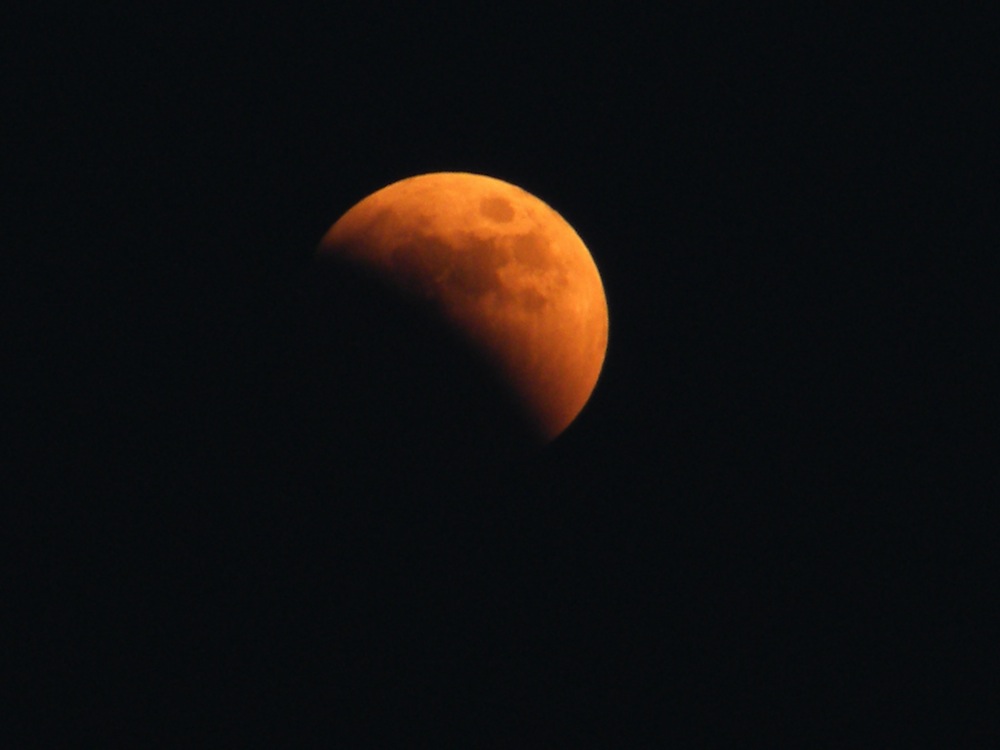Lunar Eclipse Facts: 5 Neat Things About Tonight's 'Blood Moon'

The first total lunar eclipse of 2014 will occur overnight tonight, marking the start of an eclipse tetrad — four back-to-back total lunar eclipses — that will happen over the next 18 months.
During the skywatching spectacle, Earth's shadow will block out the sun's light, casting an eerie veil over the moon. The eclipse is set to begin around 2 a.m. EDT (0600 GMT), and should last for about 3.5 hours.
Here are five things to know about tonight's lunar eclipse.
1. People in North America should look up
Skywatchers across most of North America and parts of South America should be able to see the total lunar eclipse unfold, weather permitting. Detailed visibility maps, including graphics that show which parts of the world may be able to see the various stages of the eclipse, are available at Space.com.
2. It will be broadcast live
If you live outside of North America, or if clouds are threatening to block your view of the eclipse, you may still be able to enjoy the celestial show. Tonight's total lunar eclipse will be broadcast live on Space.com, courtesy of NASA, the Slooh community telescope and the Virtual Telescope Project. The eclipse webcasts will begin at 2 a.m. EDT (0600 GMT Tuesday), and will include live feeds from telescopes across North America.
Breaking space news, the latest updates on rocket launches, skywatching events and more!
The Slooh webcast will also feature commentary from the online observatory's director, Paul Cox, and astronomer Bob Berman, who will be reporting live from the Prescott Observatory in Prescott, Ariz.
3. There are more lunar eclipses to come
Tonight's eclipse will be the first of four total lunar eclipses that will occur over the next 18 months, according to astronomers. The eclipses in this so-called tetrad should be visible for all or parts of the United States, Fred Espenak, a NASA astrophysicist and eclipse specialist, said in a statement.
The next total lunar eclipses will occur Oct. 8, 2014, April 4, 2015, and Sept. 28, 2015. Previously, an eclipse tetrad occurred from 2003 to 2004. The next time skywatchers will be treated to four consecutive total lunar eclipses will be in the years 2032 to 2033, according to NASA.
4. It's called a "blood moon"
During an eclipse, the moon may turn a red or coppery color as it reflects sunrises and sunsets happening around the world. While the moon is in shadow, some light from the sun shines through Earth's atmosphere. Red light (unlike other colors that are blocked and scattered) is better able to penetrate the atmosphere, which creates this "bloody" effect.
5. Don't worry, the world is not going to end
Despite rumors circulating online that suggest the lunar eclipse tetrad is linked to biblical prophesies of the apocalypse, there is no reason to fear tonight's blood moon, according to astronomers. In fact, eclipse tetrads are not particularly rare, Espenak said.
"During the 21st century, there are nine sets of tetrads, so I would describe tetrads as a frequent occurrence in the current pattern of lunar eclipses," he explained. "But this has not always been the case. During the 300-year interval from 1600 to 1990, for instance, there were no tetrads at all."
Follow Denise Chow on Twitter @denisechow. Follow Live Science @livescience, Facebook & Google+. Original article on Live Science.

Denise Chow is a former Space.com staff writer who then worked as assistant managing editor at Live Science before moving to NBC News as a science reporter, where she focuses on general science and climate change. She spent two years with Space.com, writing about rocket launches and covering NASA's final three space shuttle missions, before joining the Live Science team in 2013. A Canadian transplant, Denise has a bachelor's degree from the University of Toronto, and a master's degree in journalism from New York University. At NBC News, Denise covers general science and climate change.

